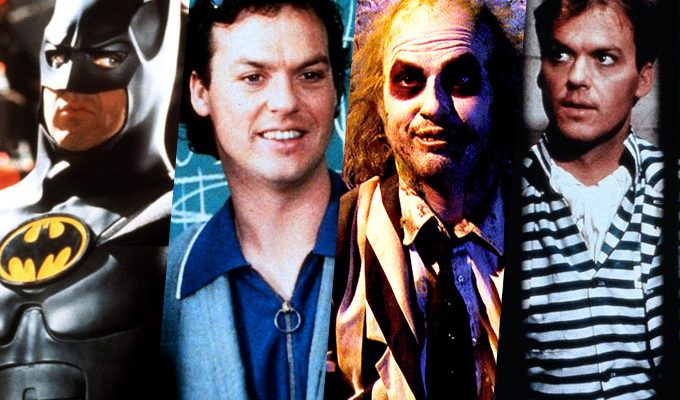 The oddly arched eyebrows. The slightly wolfish grin. The constant undercurrent of manic, twitchy volatility. It may not have been until his unavoidably, undeniably brilliant turn in “Birdman” (read our review here) that we really thought too much about trying to define what we so love about Michael Keaton, but now that it’s happened, we realize that whatever it is, it is exactly what we’ve been missing for the past few years.
The oddly arched eyebrows. The slightly wolfish grin. The constant undercurrent of manic, twitchy volatility. It may not have been until his unavoidably, undeniably brilliant turn in “Birdman” (read our review here) that we really thought too much about trying to define what we so love about Michael Keaton, but now that it’s happened, we realize that whatever it is, it is exactly what we’ve been missing for the past few years.
Contrary to how it might feel, Keaton’s comeback has been in the works for a little while now. In fact, he makes a fascinating case study for the nature of the Hollywood career renaissance, owning that narrative this year kind of the way Matthew McConaughey did in 2013. What makes one actor, especially one getting on a bit (Keaton turned 63 in September), a fit subject for rediscovery and reestablishment in the Hollywood firmament, while others languish in bit parts and crusty old dean roles for the remainder of their working lives? Why does the fickle finger of fame swing back to point so definitively at one guy (almost always a guy, mind you) and not another? How do you get the timing right so that you’re not so off the radar that no one remembers you, and yet not so familiar that viewers don’t experience a kind of swoon of joy at your return, like an old friend who’s been away a while and must have some pretty great stories to tell us?
One of the reasons Keaton’s revitalization is so welcome, is that we never quite had our fill. He always had an air of holding something in reserve, even in his zaniest early-career highs. There was a sense that there was more to come here, a kind of ellipsis hanging off the end of every film. But until recently, that promise seemed to have fizzled out. You thought of Keaton (when you thought of him at all) and associated him with his famous ‘80s and ’90s roles, rather than immediately linking him to anything more recent. He was brought up as a compare-and-contrast Batman to Christian Bale’s grittier, broodier, Nolan-ier take, and every now and then might be buoyed up by a temporary burst of nostalgia following a late-night TV screening of “Beetlejuice” or “Gung Ho.” Certainly during his wilderness period in the early-to-mid ’00s (family films “Herbie: Fully Loaded” and “First Daughter,” lame horror “White Noise,” and the even lamer thriller “Quicksand” being among the more ignominious of his titles from that time) it felt like he had gone off the boil, out of style somehow. The vehicles he landed did not capitalize on his inherent weirdness, and he seemed to be content to take them on as paycheck gigs.

But following a solid but sadly underseen directorial debut with 2009’s “The Merry Gentleman,” things started to pick up. Already a Pixar alum from “Cars,” he voiced Ken in the smash hit “Toy Story 3,” and gave a brilliantly funny turn in 2010’s “The Other Guys” before netting a few more paycheck gigs, including a substantial supporting role in the much-better-than-it-has-any-right-to-be “Robocop” remake. All of this can now be seen as the extended throat clearing before “Birdman,” and the rest is history. Or at least it will be in a few years time and we look back on this period again—as much as we know it’s dangerous to predict any sure thing in the notoriously fickle world of Hollywood, we’re going to go out on a limb and state firmly that we believe that, while that role may be the culmination of all Keaton’s untapped potential to date, it’s only the beginning. Certainly, having only just got him back again, we’re not going to let him go in a hurry.
And the future augurs well. The next firmed up role for Keaton is in Playlist favorite Thomas McCarthy’s Catholic Church sex abuse scandal drama “Spotlight,” which has all sorts of Oscar potential. To get you in the mood for “Birdman,” which you simply must see, we’ve assembled, in no particular order, ten of Michael Keaton’s best roles (and it wasn’t easy to stop at ten). We recommend going to see Iñárritu’s movie then checking out some of these again—we’ve just spent the last few days doing that and it’s been a blast.

